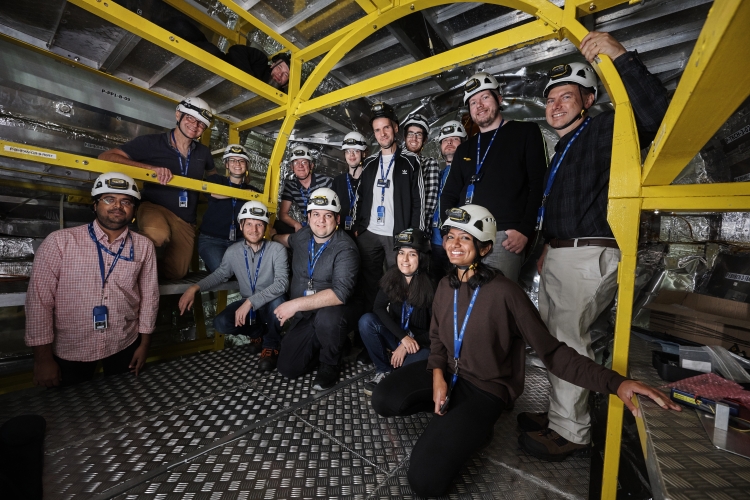
With the connection of the final cable on October 4, CMS completed the installation of new on-detector electronics for the Hadron Calorimeter (HCAL) barrel detector.
Following a series of upgrades to the electronics of various HCAL subdetectors over several years, the completion of the barrel upgrade in 2019 marks the end of the Phase 1 upgrades.
The HCAL measures the energies of particles from LHC collisions by detecting light produced by the interaction of the particles with scintillator tiles. The amount of light is measured by a small device called a photodetector. A key aspect of the HCAL barrel (HB) upgrade was the replacement of old hybrid photodetectors (HPDs) with new silicon photomultipliers (SiPMs), which offer a number of advantages. SiPMs have three times the photon detection efficiency and 200 times the gain of HPDs, and they provide a remedy to the degradation of signal resulting from premature ageing of the HPDs. In addition, the new electronics eliminate a source of high-amplitude noise and provide a 350% increase in the number of readout channels (distinct energy measurements) for each collision.
The front-end electronics modules for the HB upgrade were assembled and tested at the HCAL test facility in Building 904 at CERN. Over a period of months, a dedicated group of physicists and technicians selected components of the highest quality and combined them into units called readout modules, each equipped with 64 SiPMs. Following an extended period of testing (“burn-in”), 144 readout modules were installed on the CMS detector by small teams of skilled physicists.
Following the installation of the new electronics, the final task was to test the new system using a procedure called “sourcing.” Sourcing was a significant undertaking that required specialized hardware to control the movement of a Cobalt-60 radioactive source through small tubes on top of individual scintillator tiles. Cobalt-60 emits beta and gamma rays, which interact with nearby scintillator tiles to produce light just like particles from LHC collisions. By systematically bringing the source close to each tile and confirming the strength of the signal in the corresponding electronics channel, one can confirm that all of the cable connections were made properly and that every stage of the electronics is performing as expected. Throughout October, dedicated teams worked at Point 5 to prepare the sourcing apparatus and oversee data-taking runs.
Data from Cobalt-60 sourcing confirm that the HB upgrade is functioning very well, thereby bringing a successful end to the HB upgrade one month ahead of schedule.
- Log in to post comments

